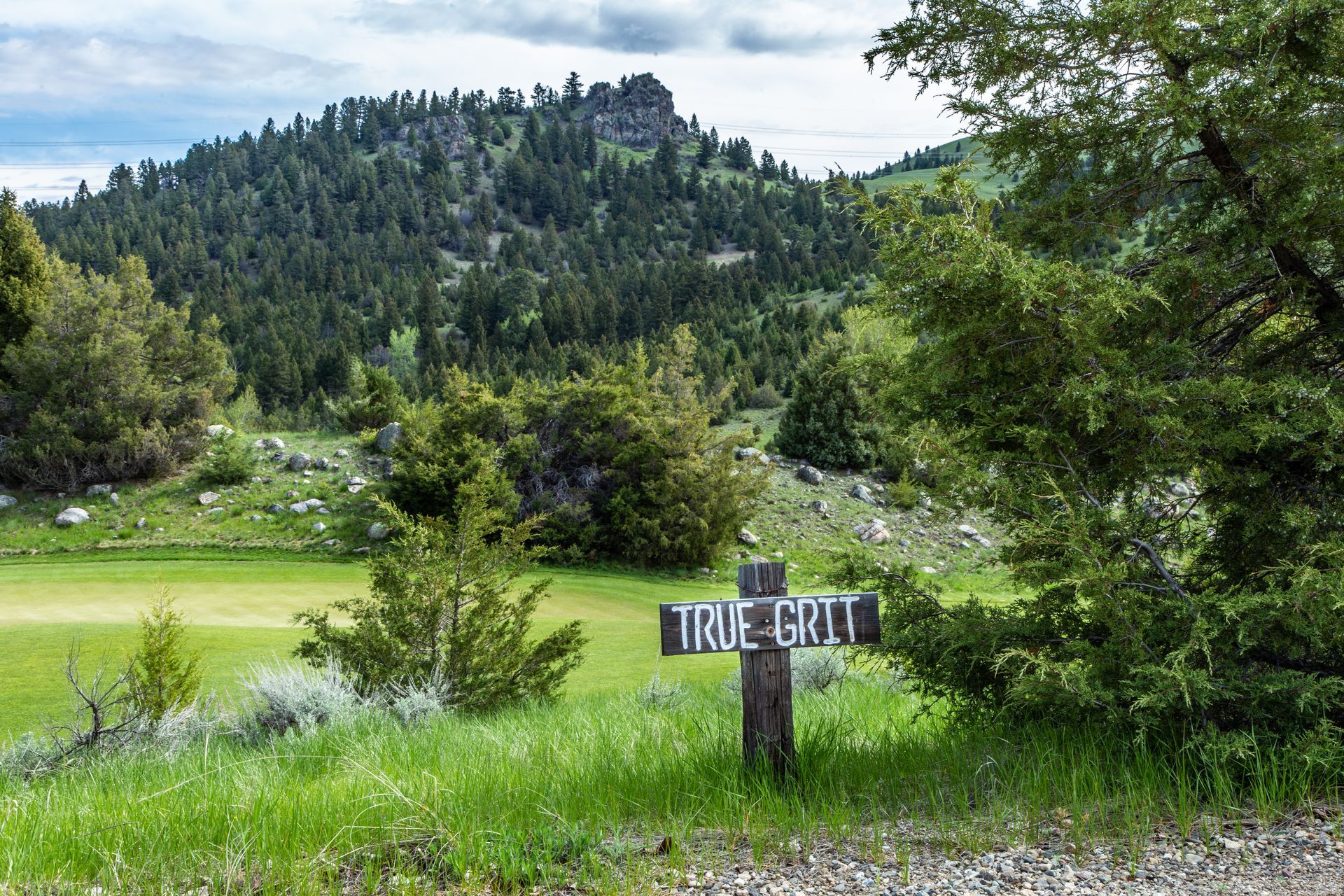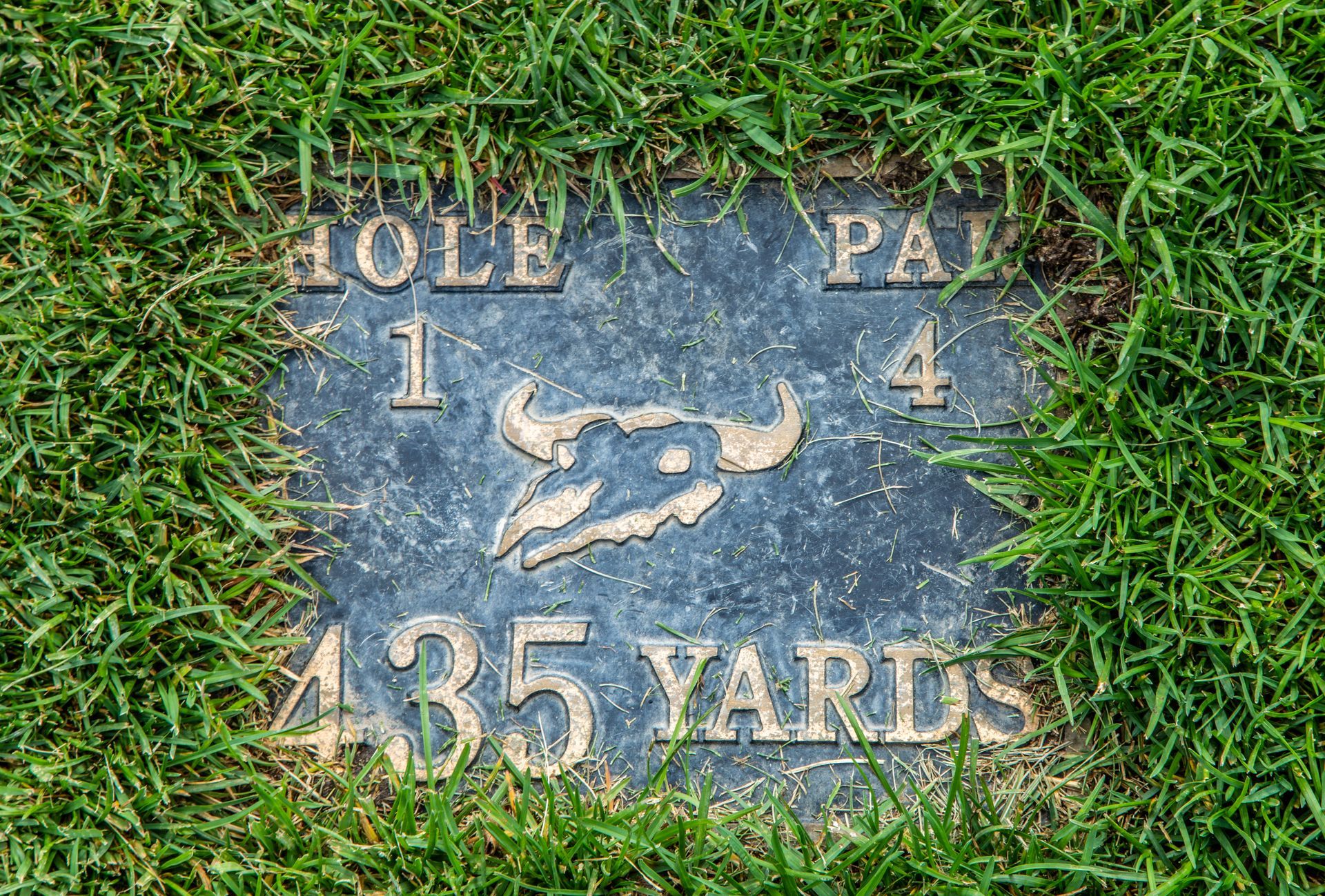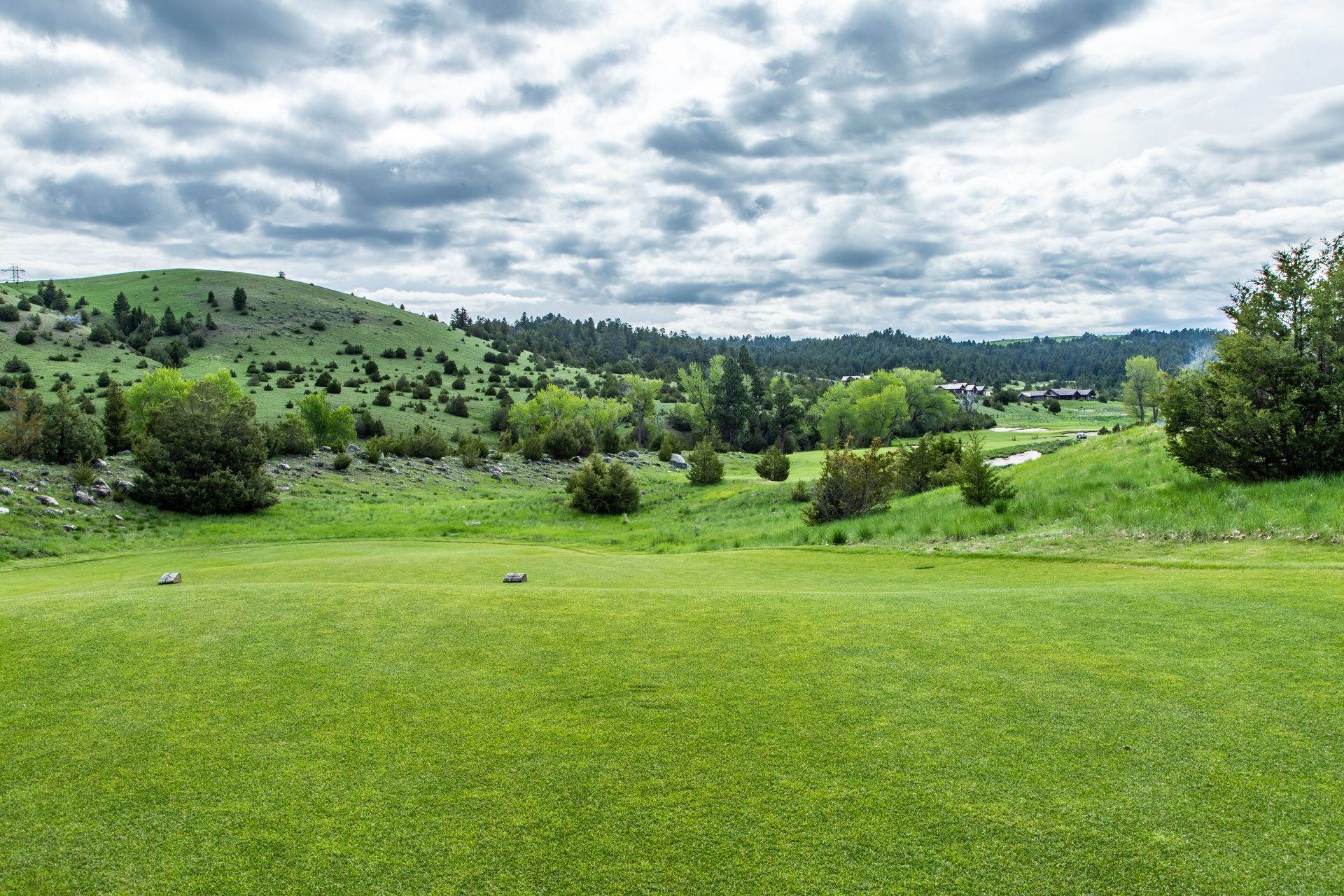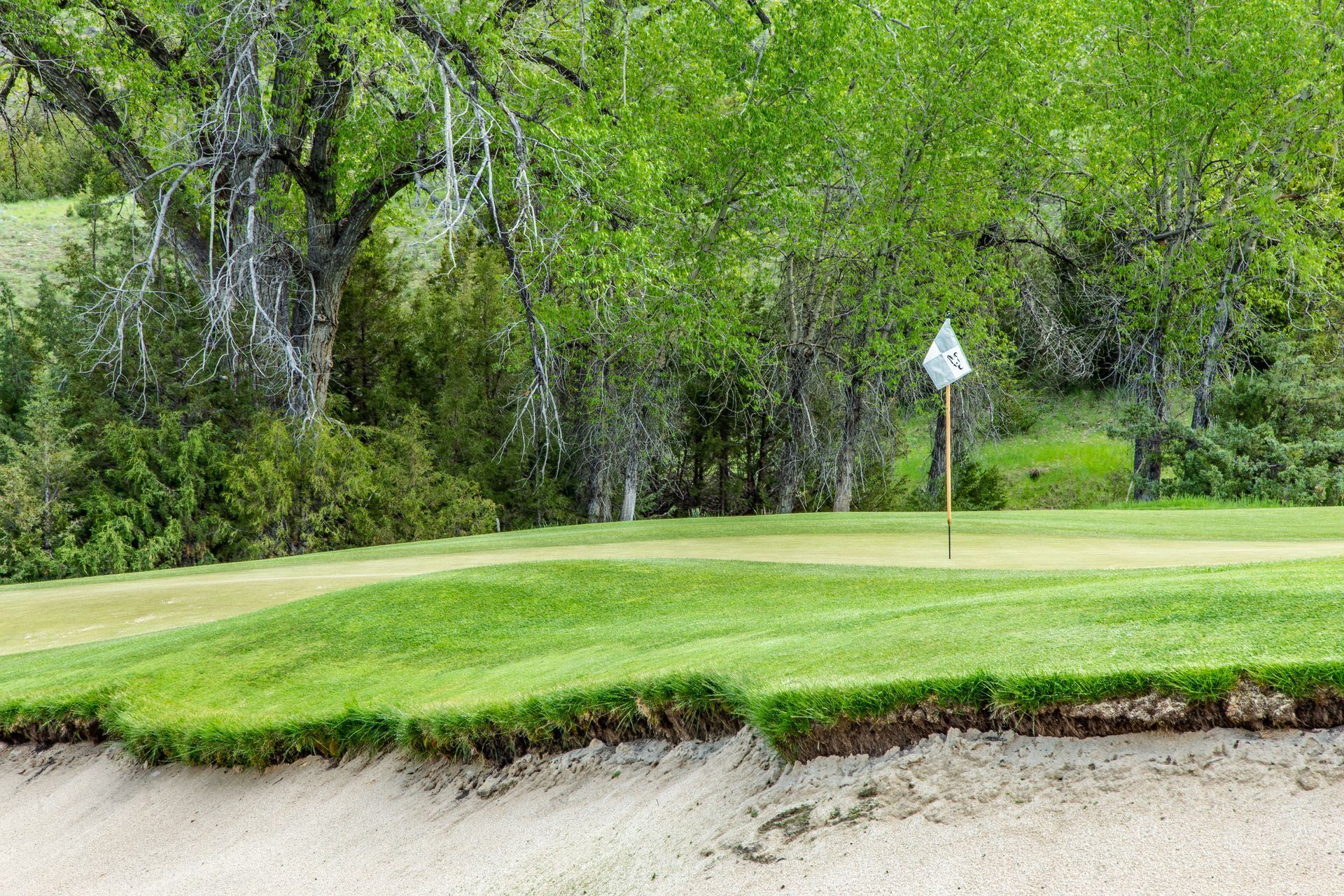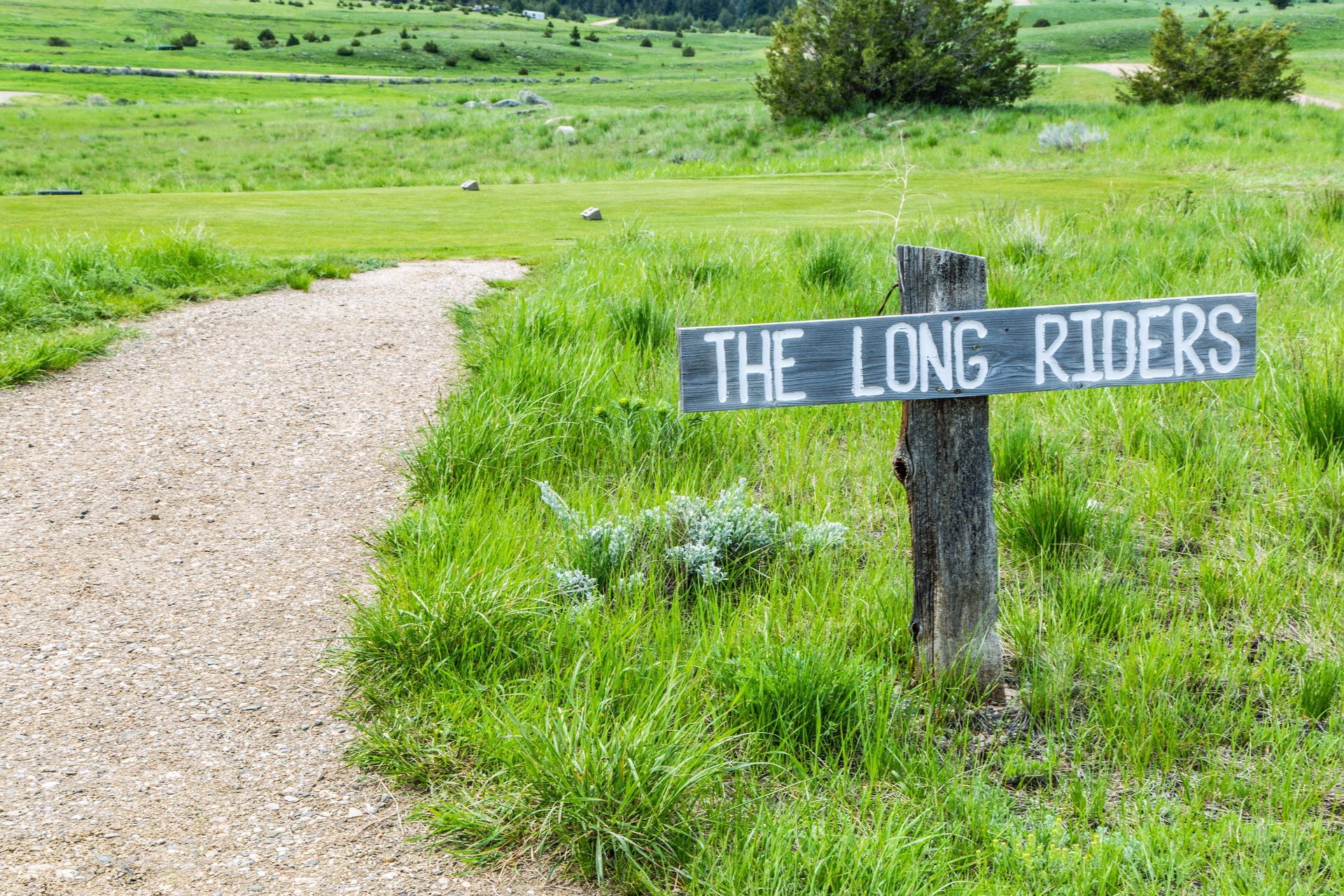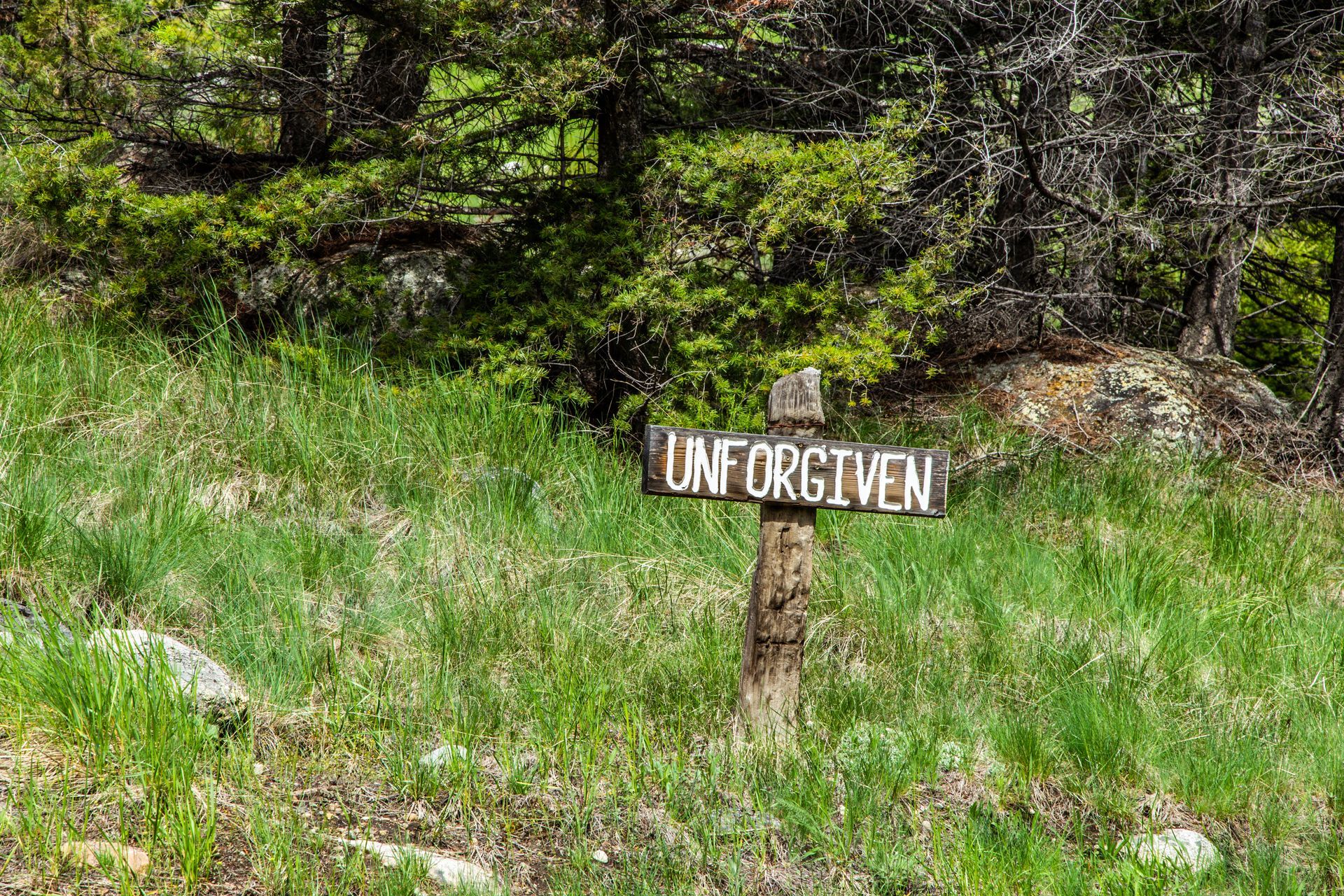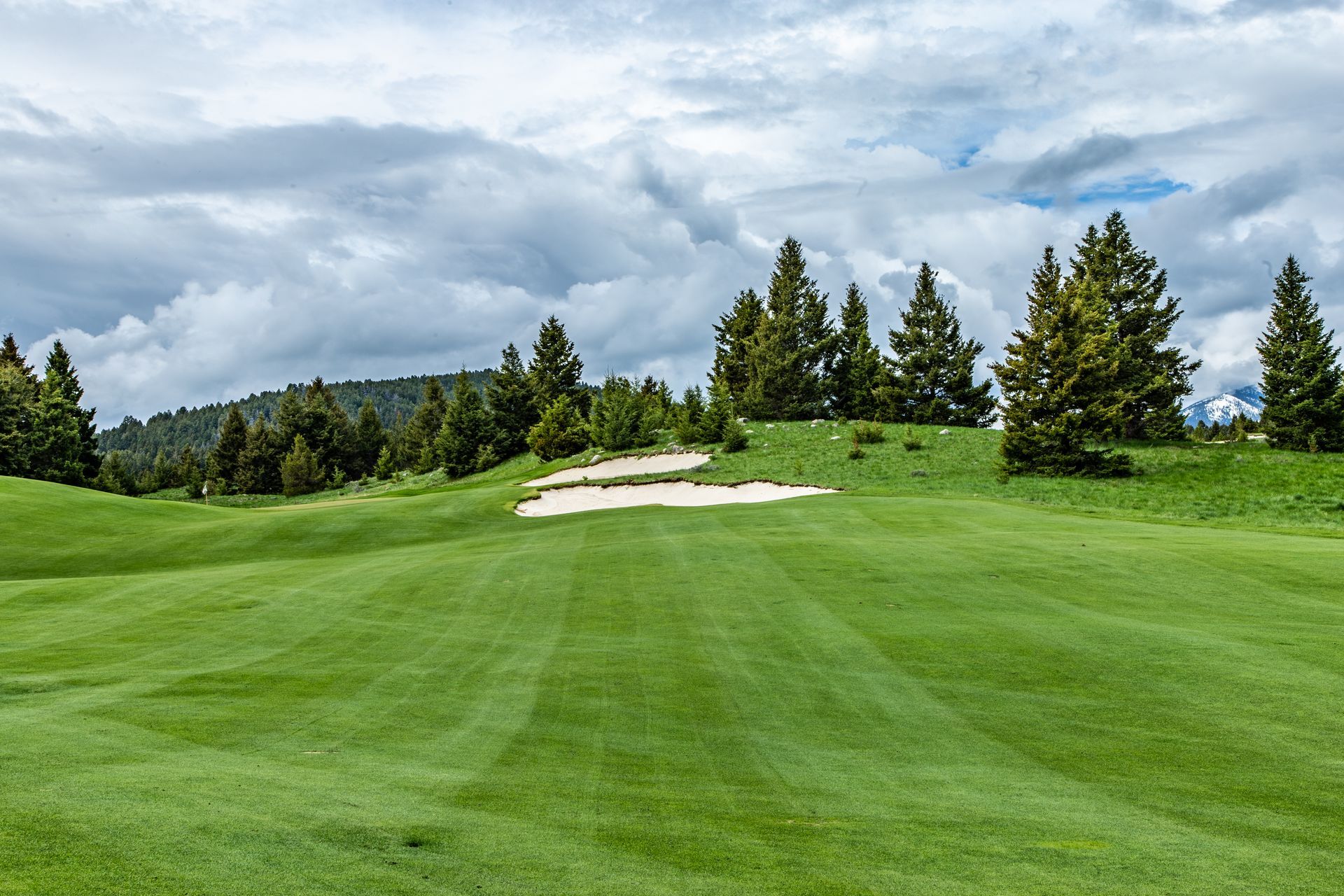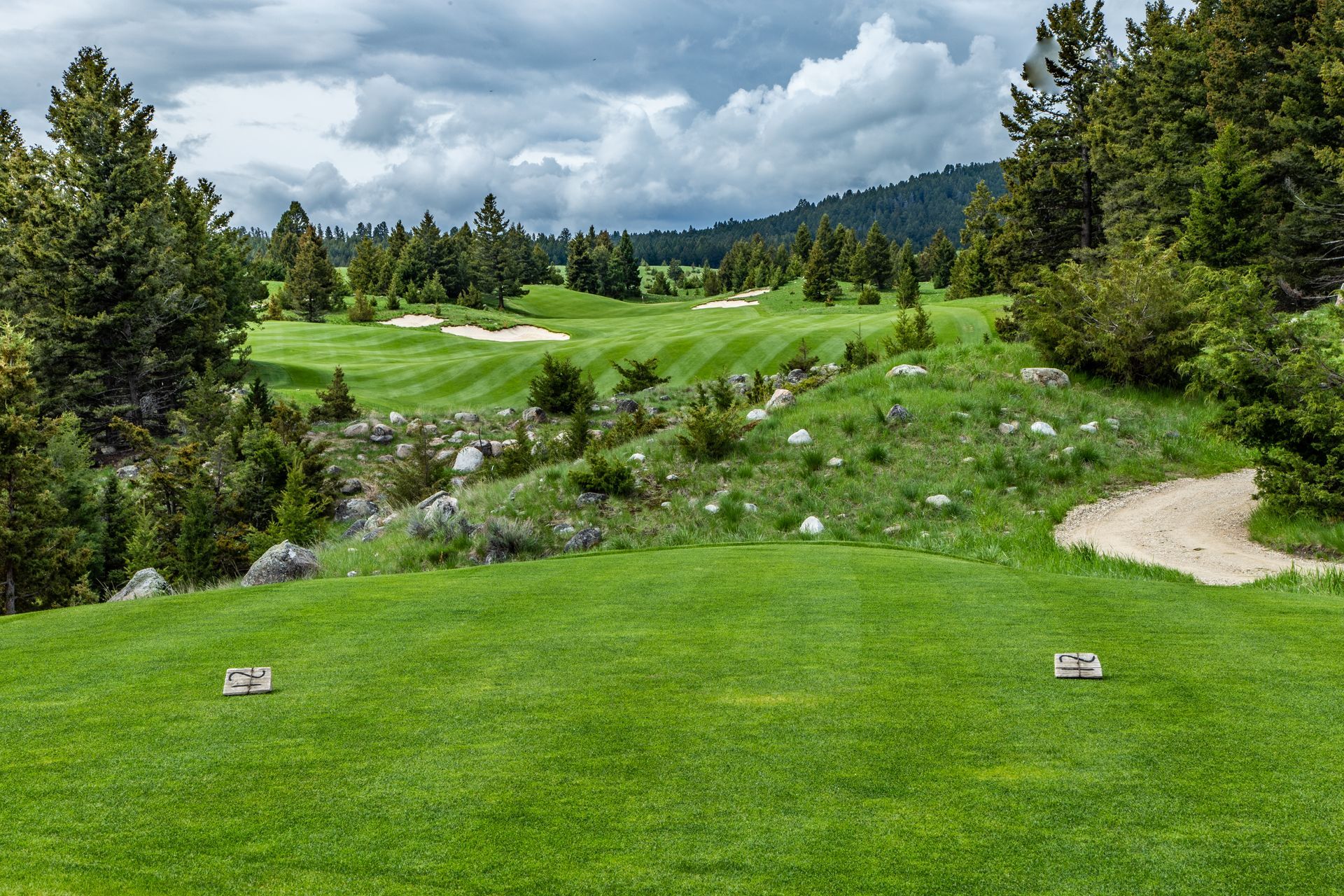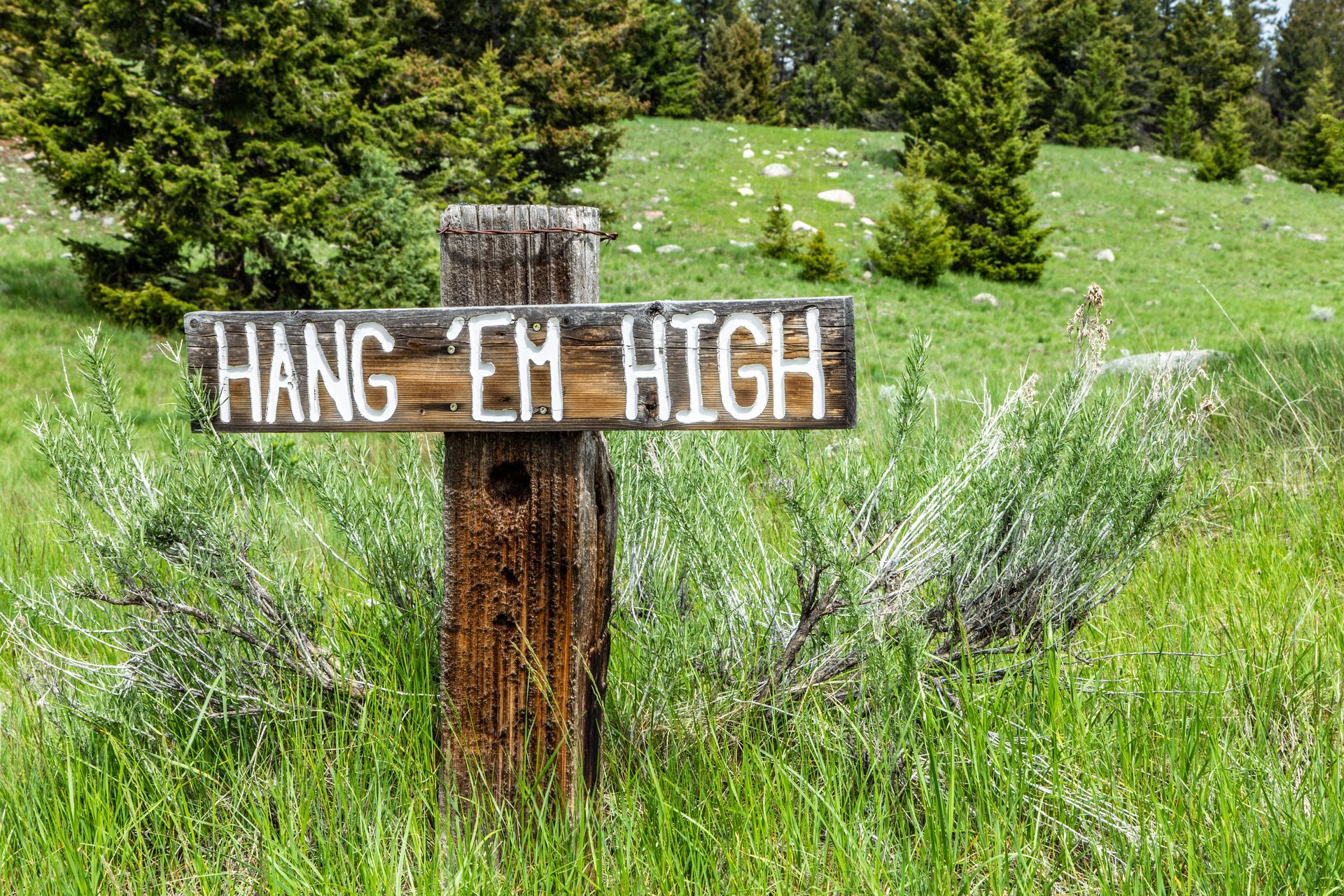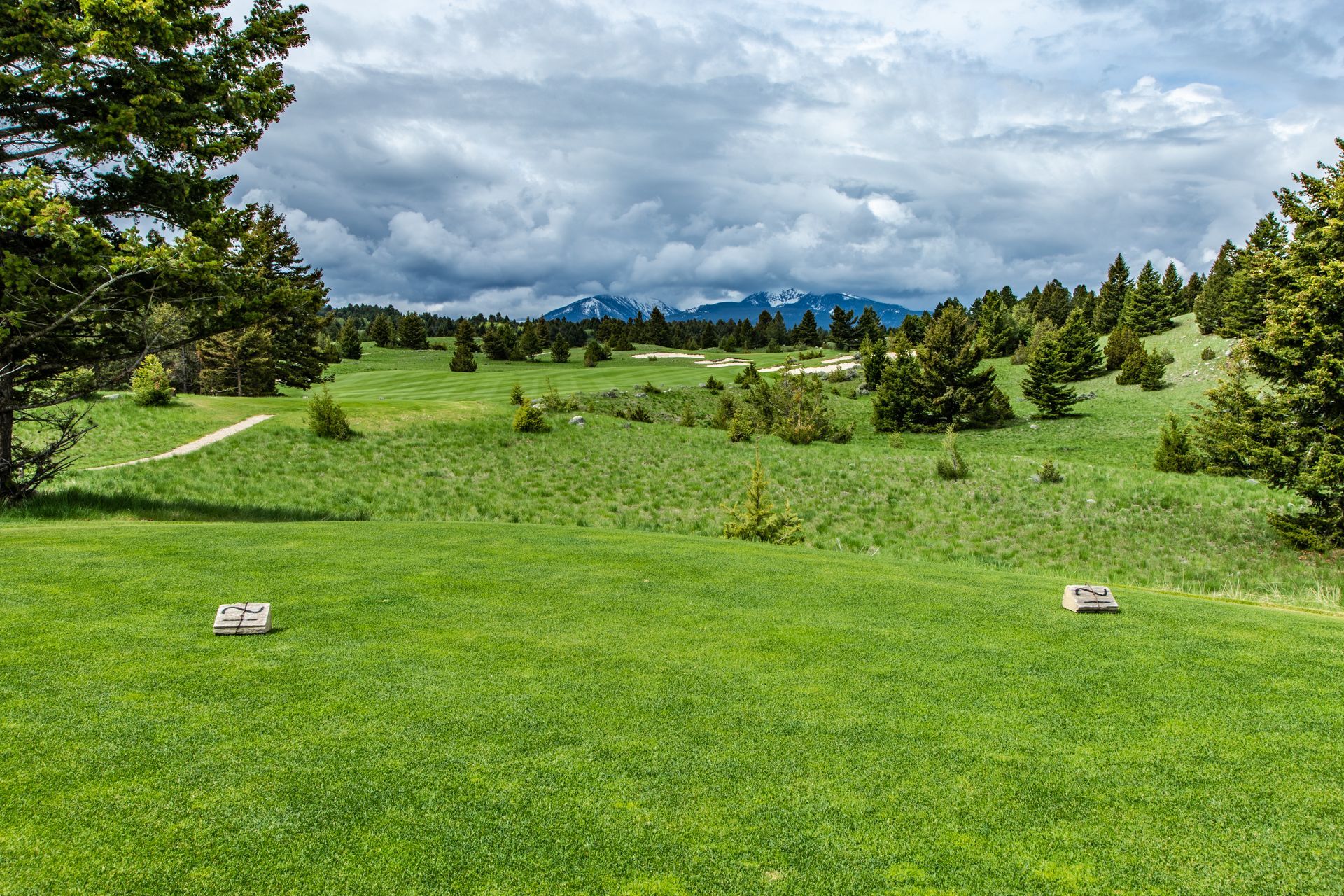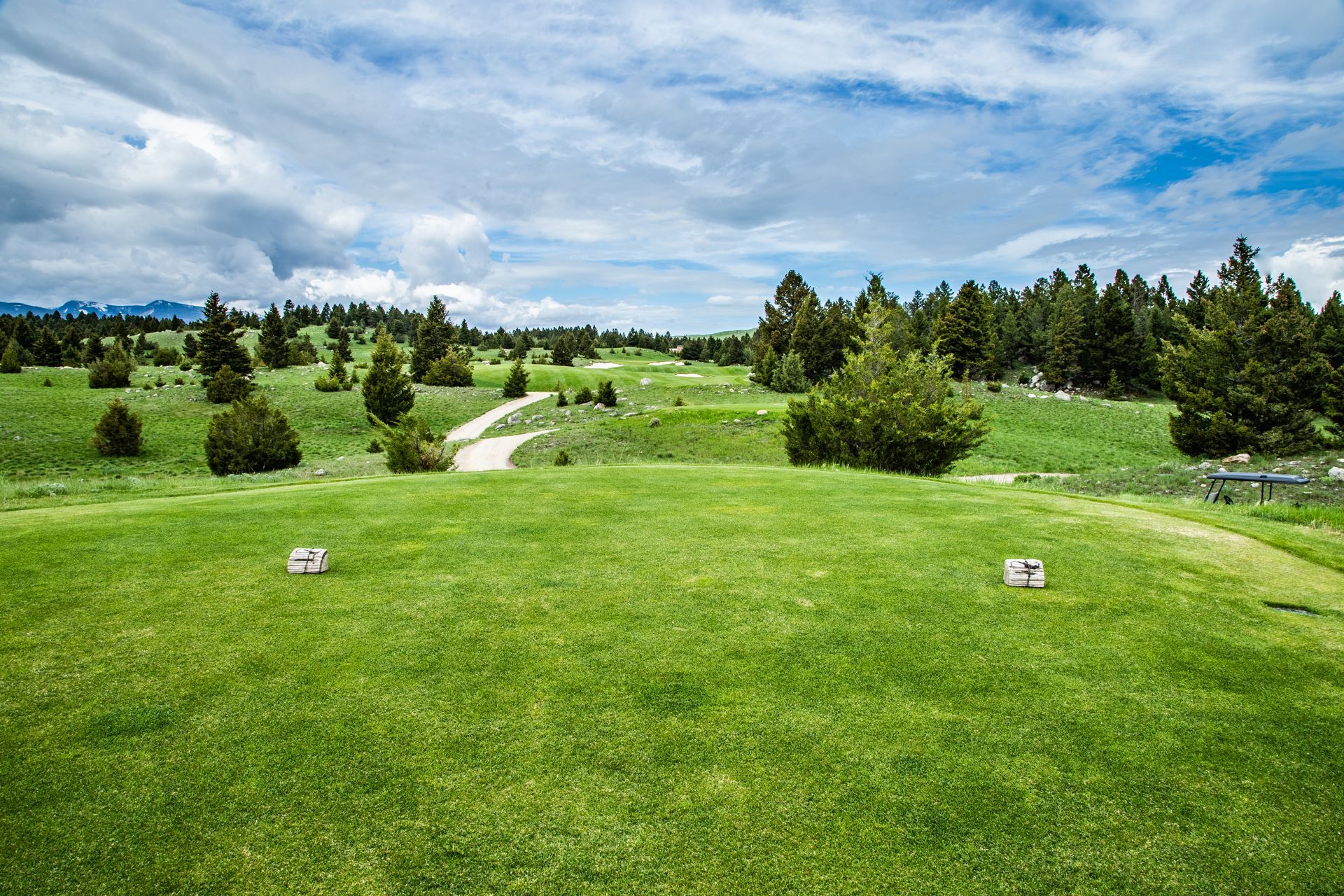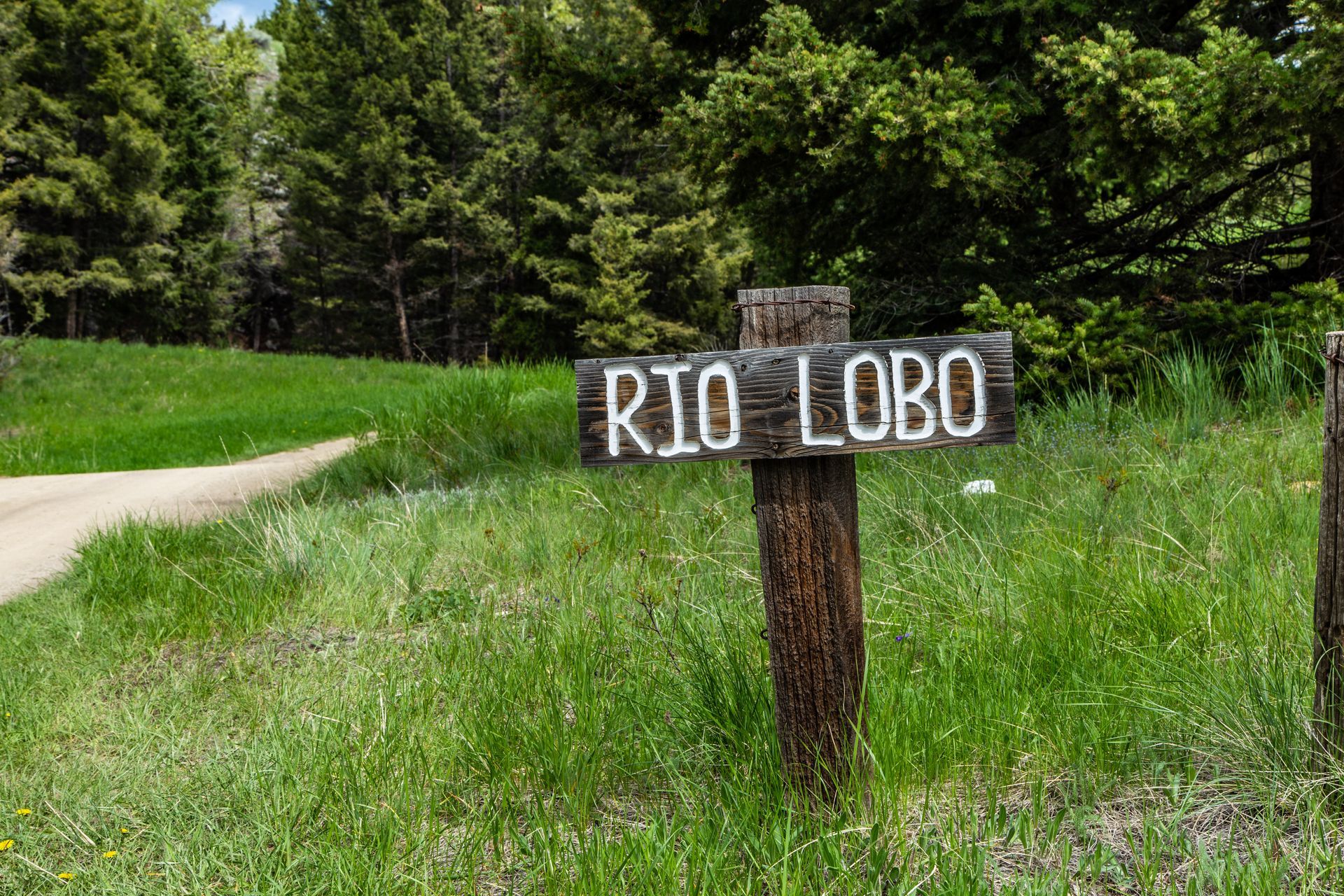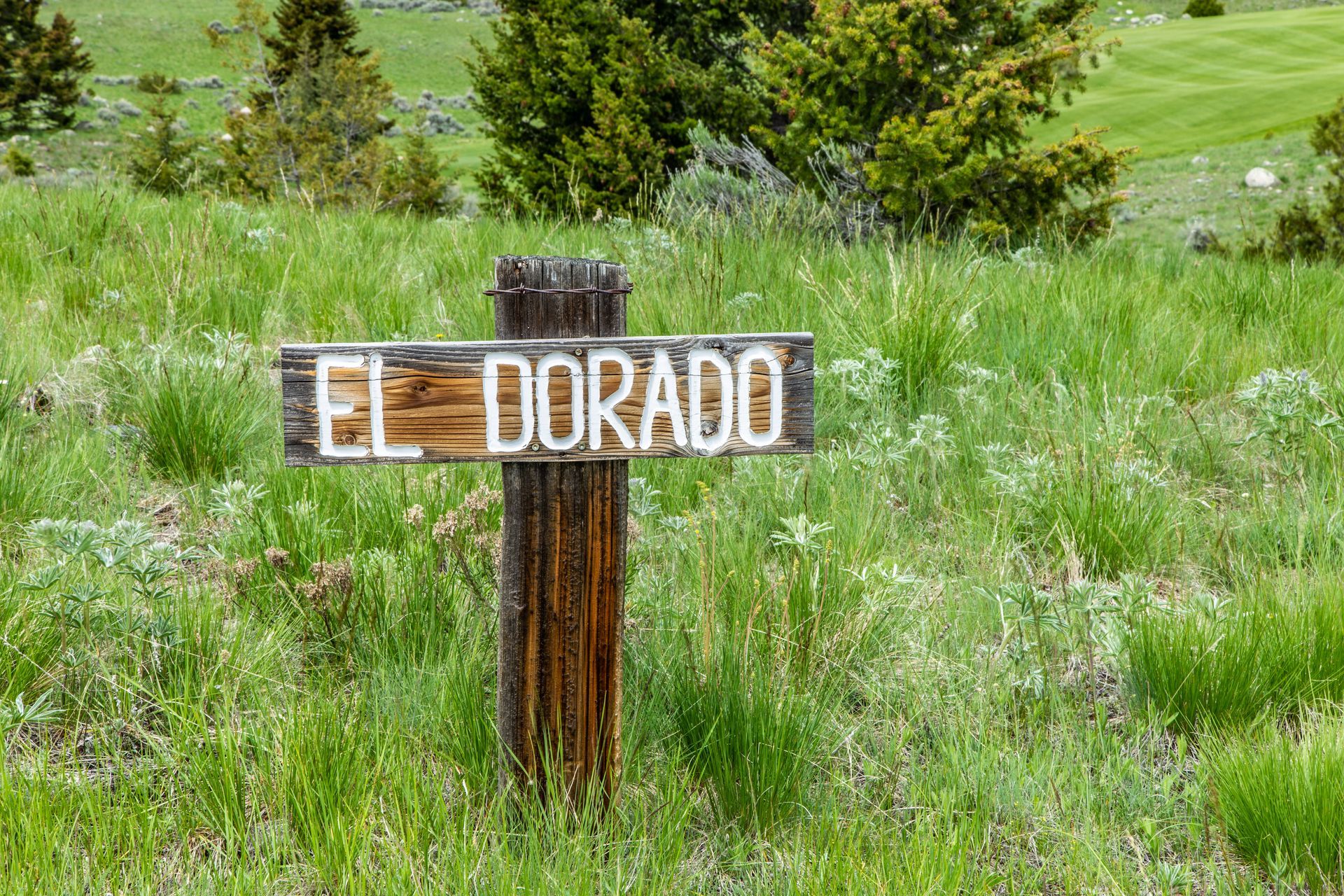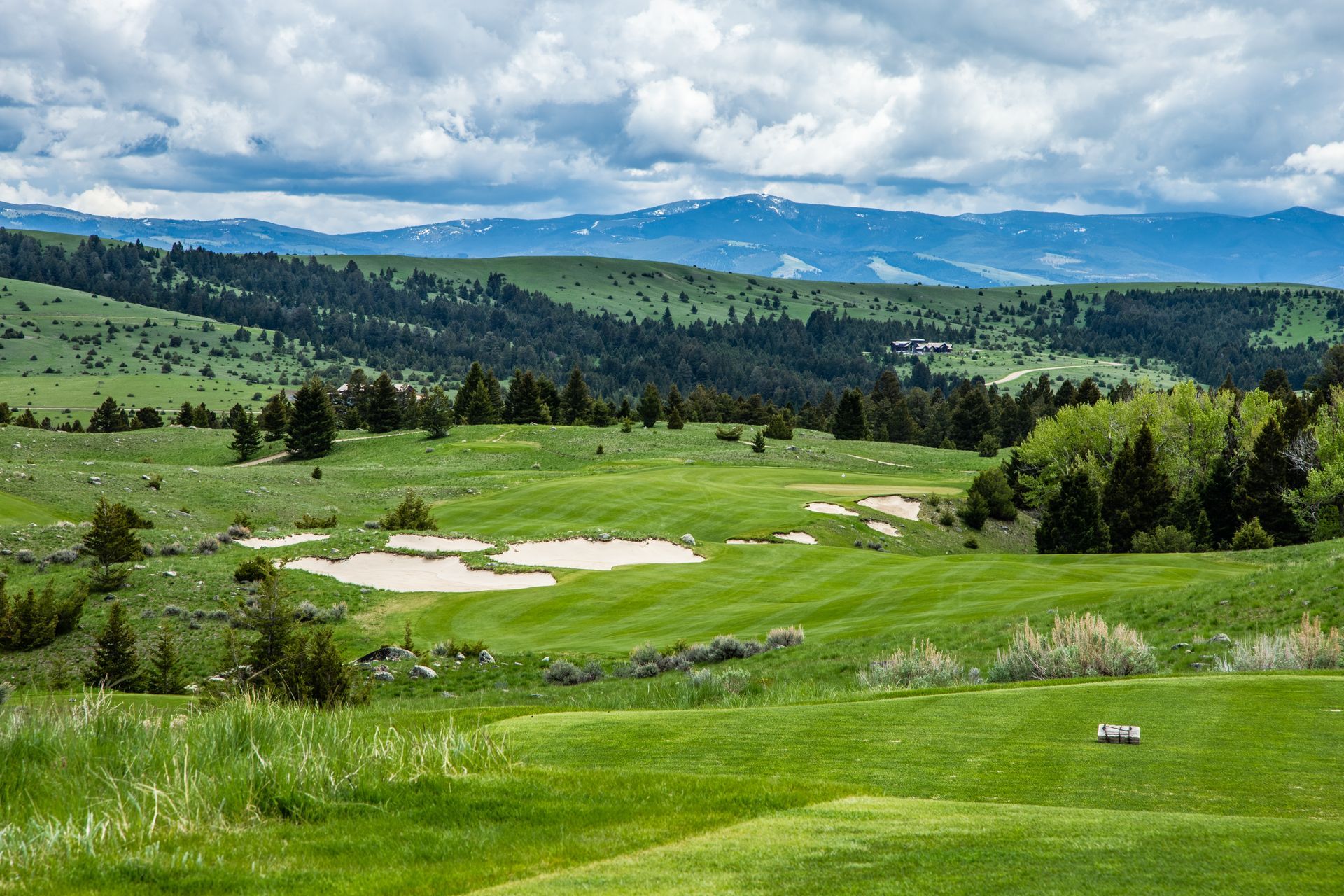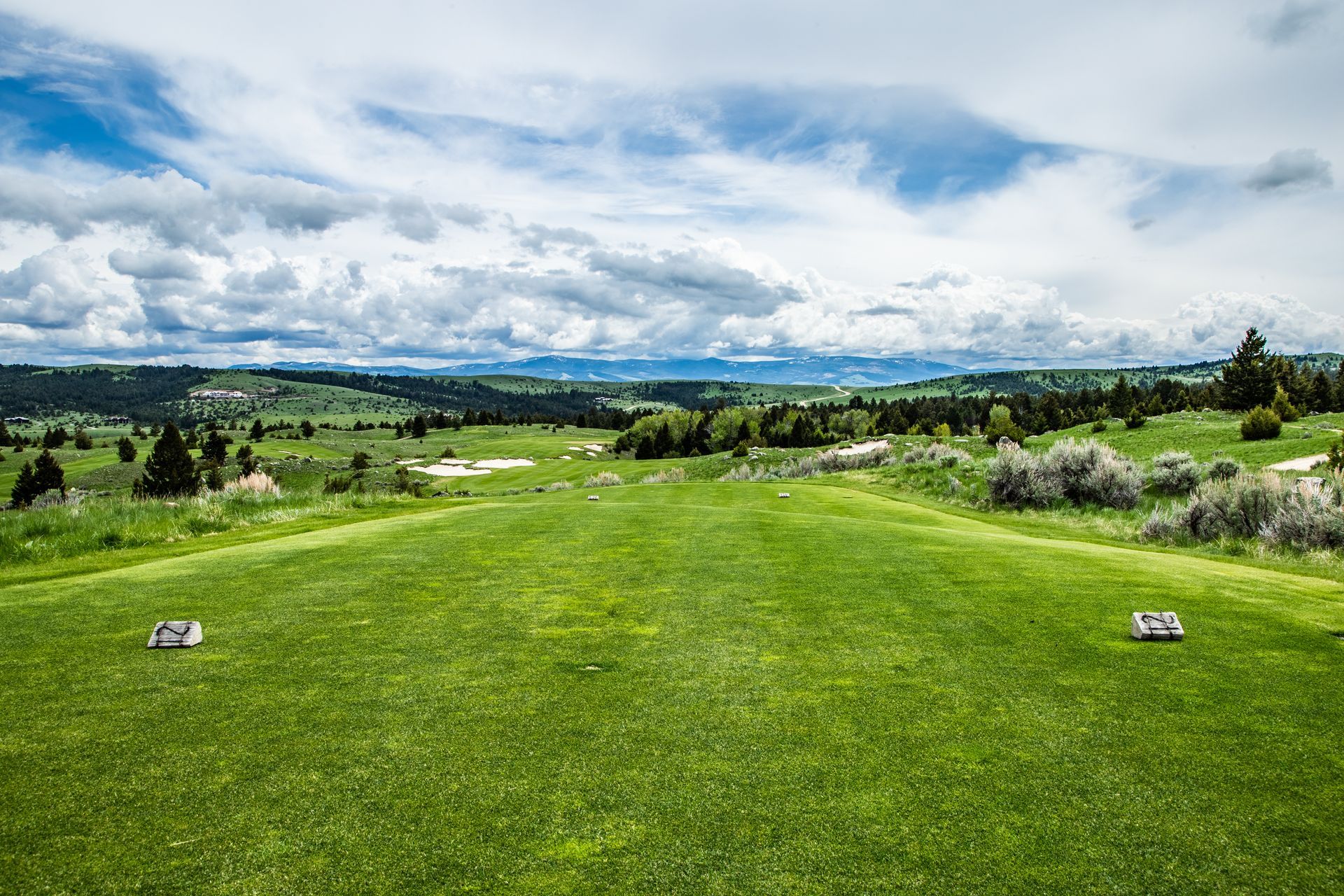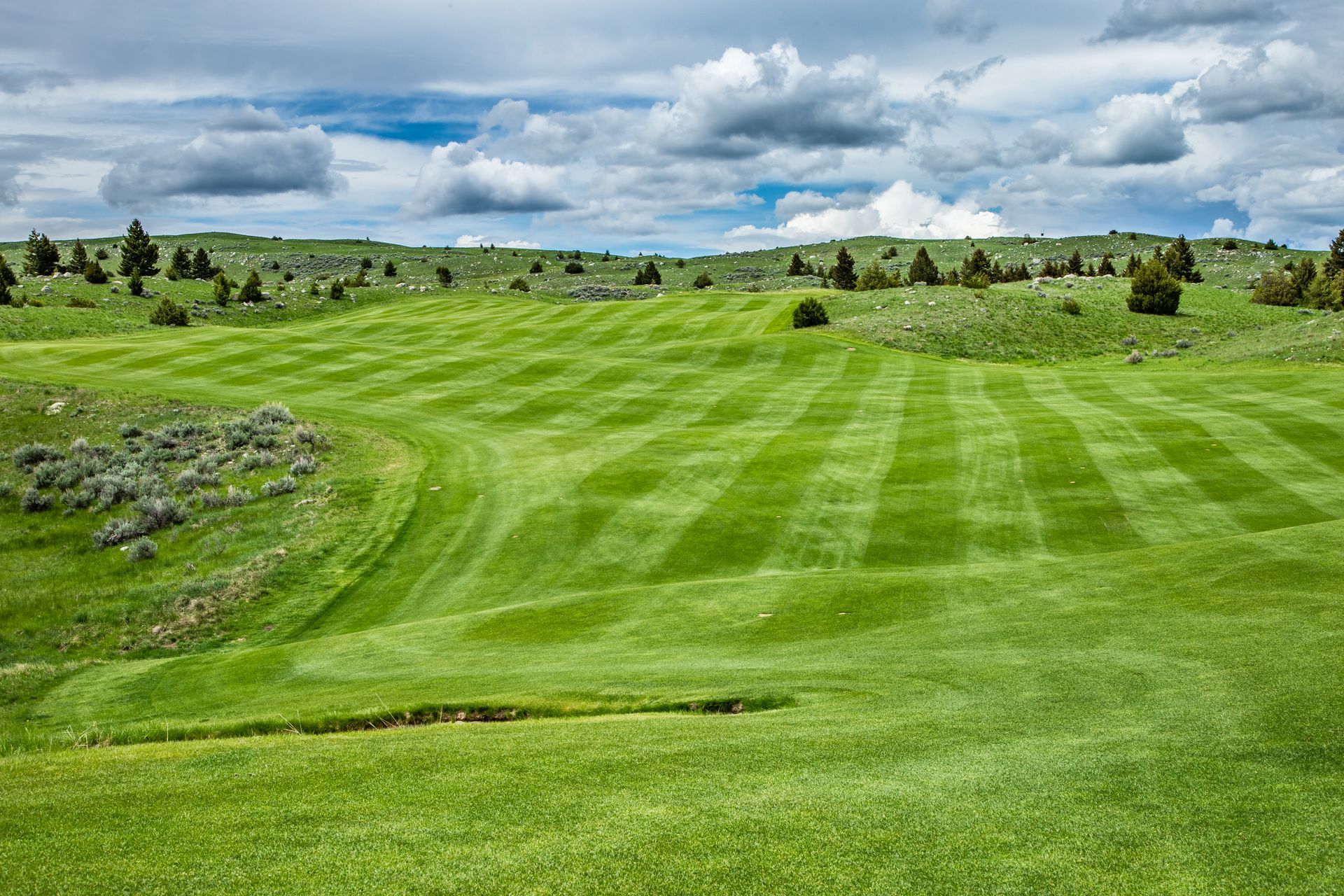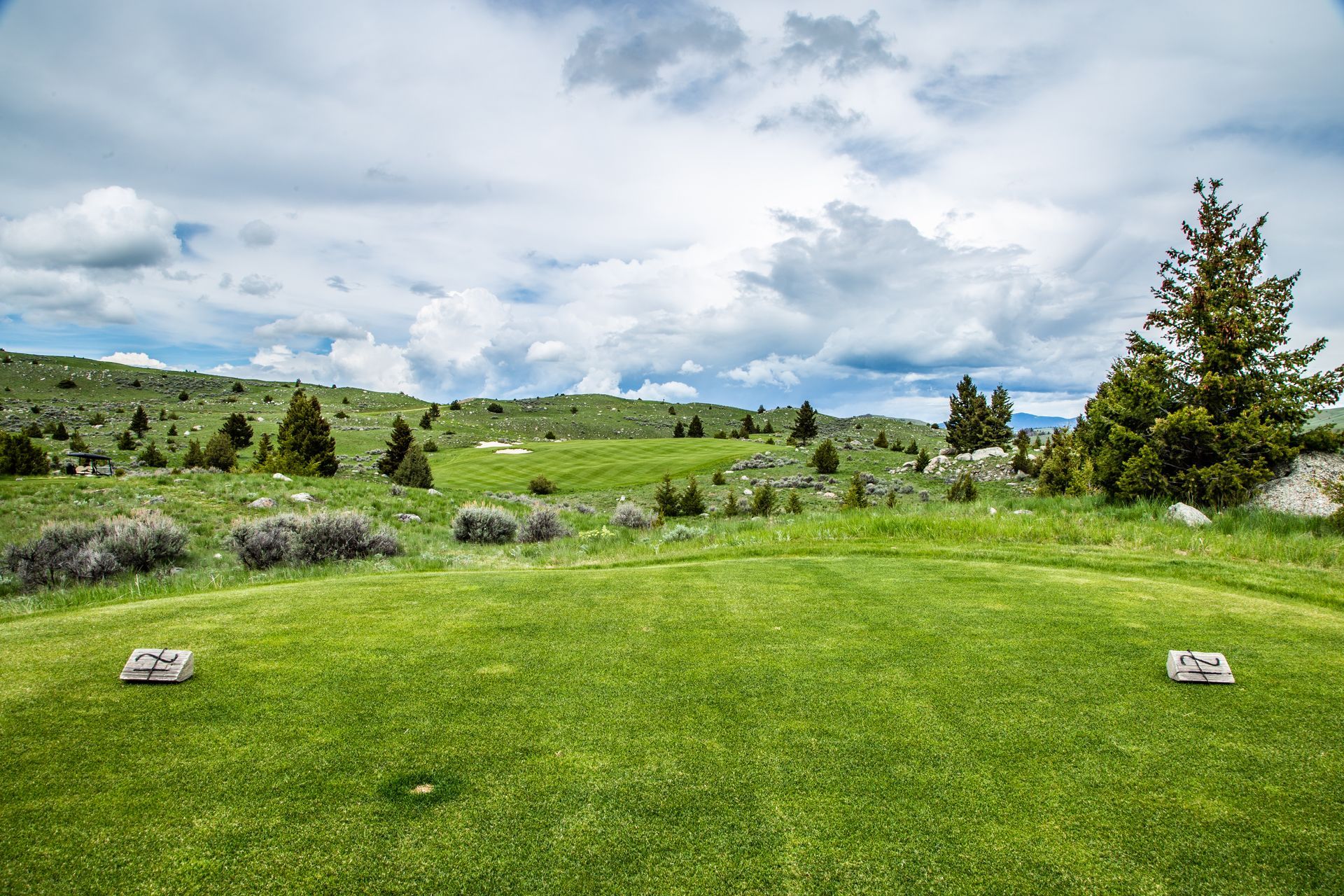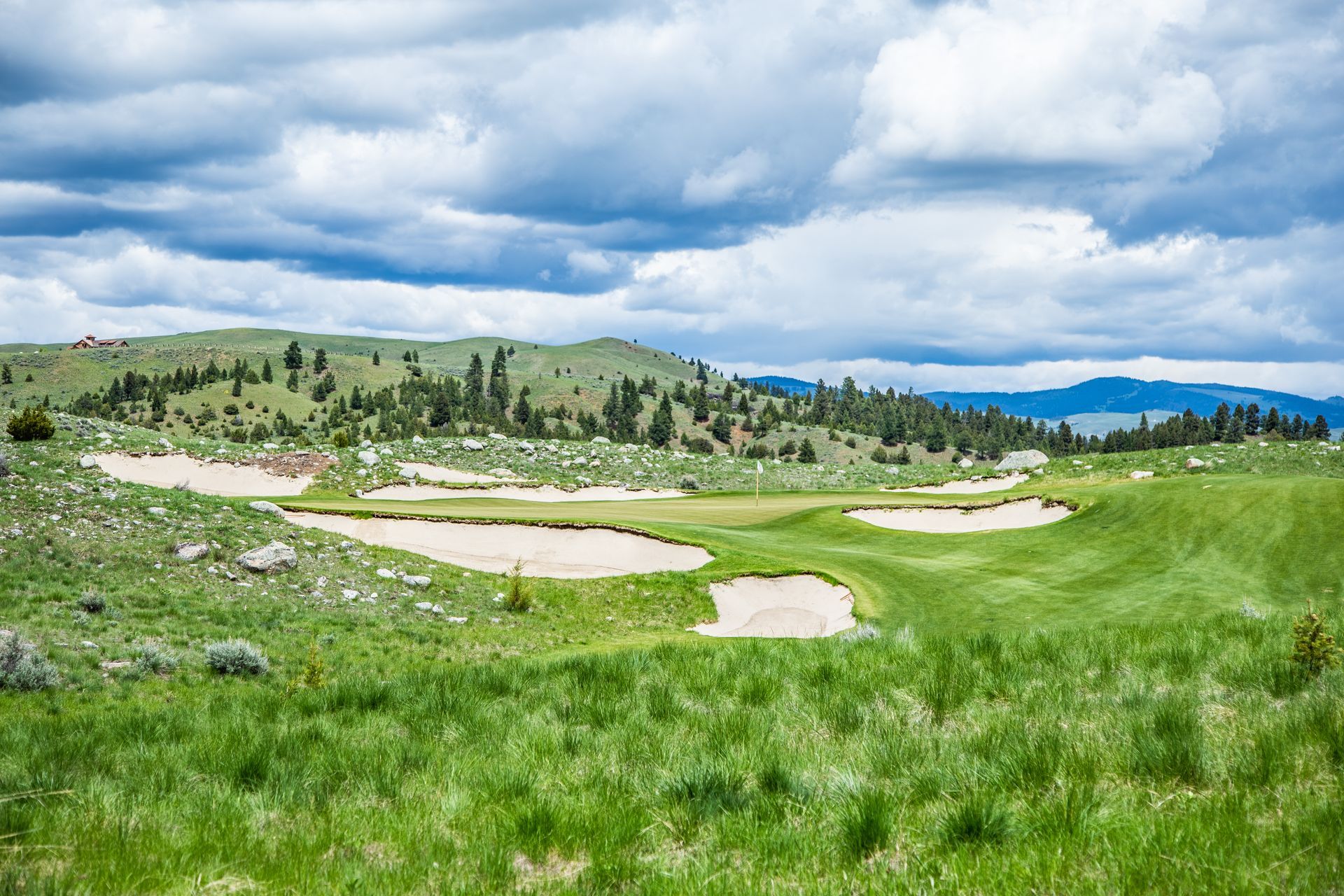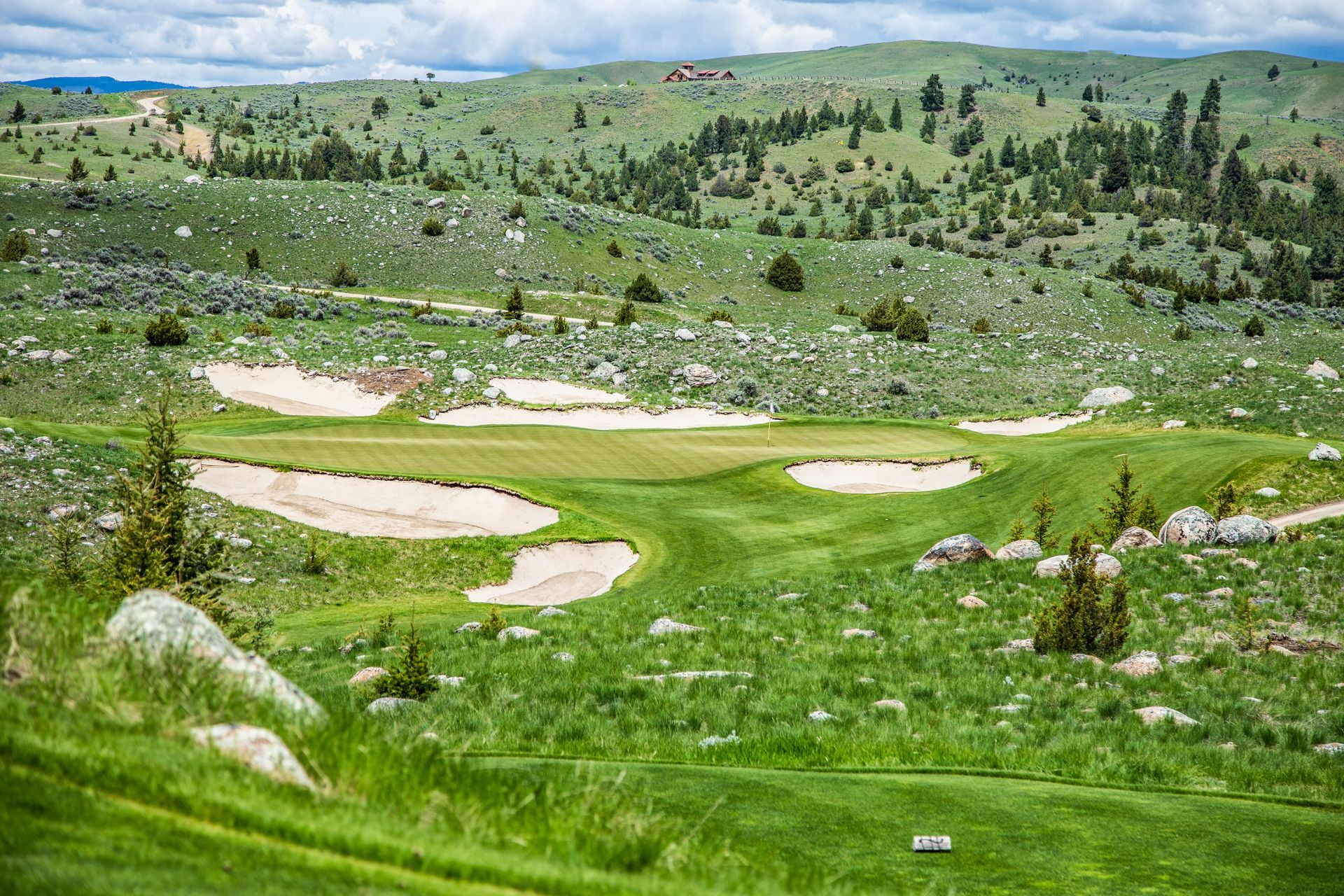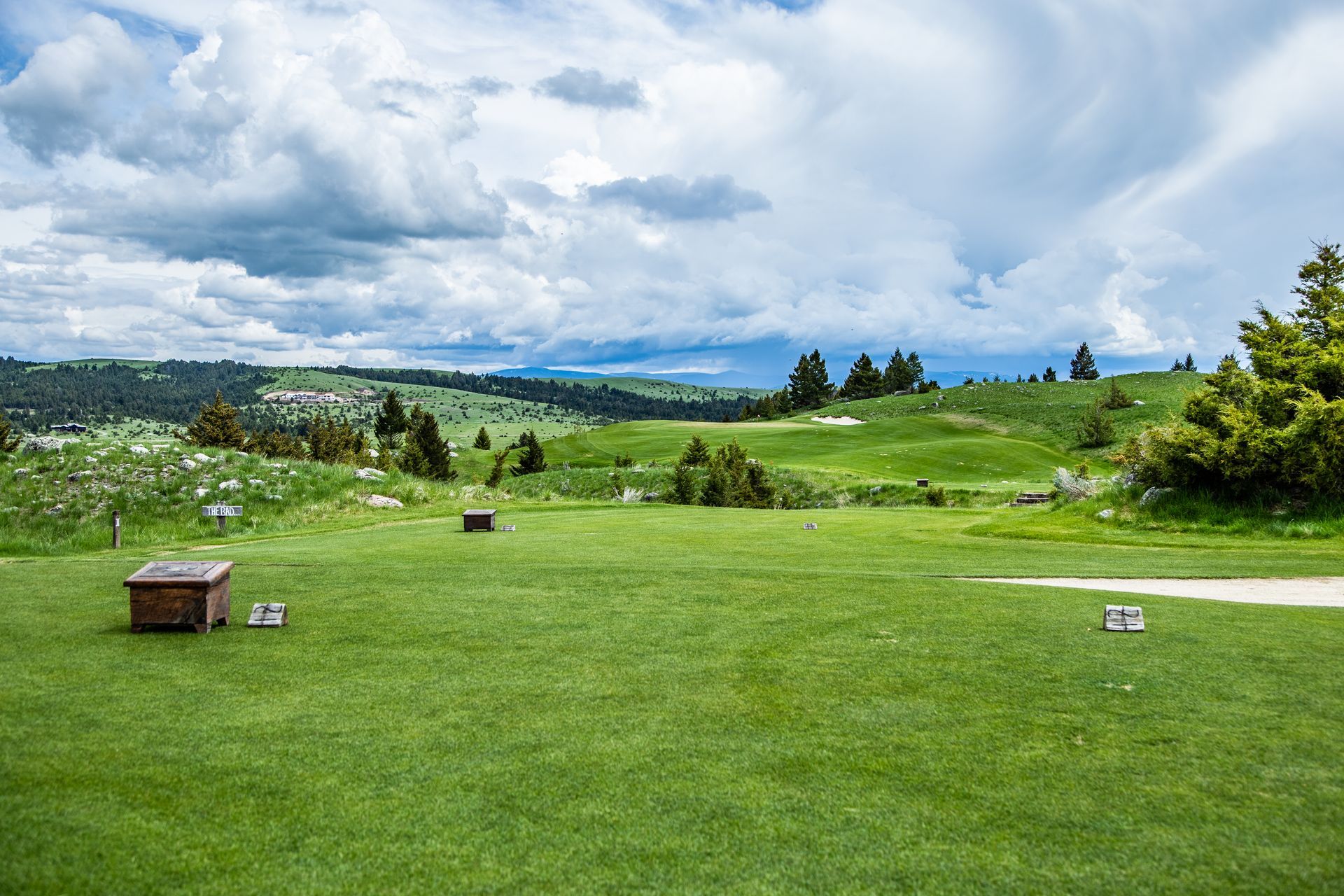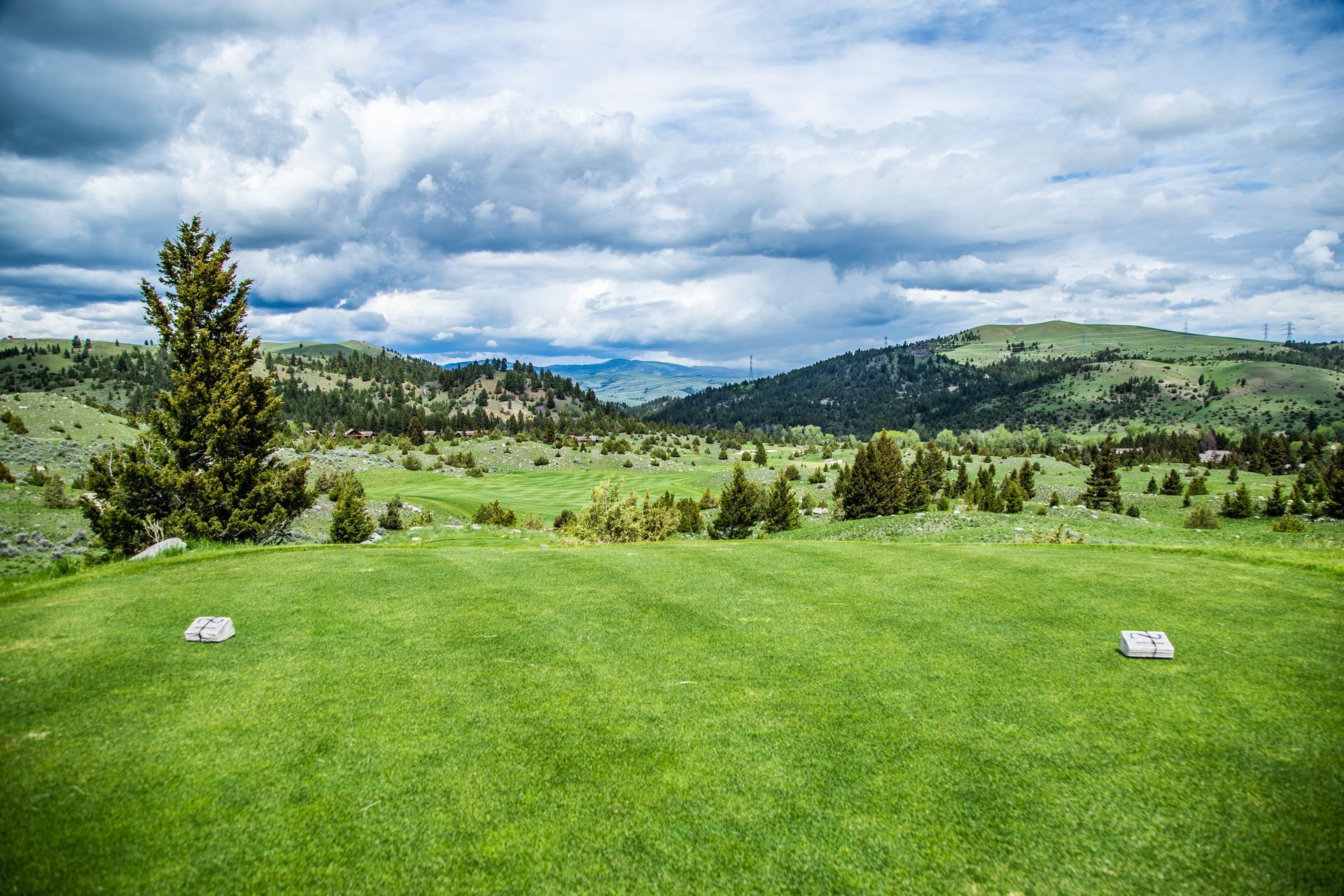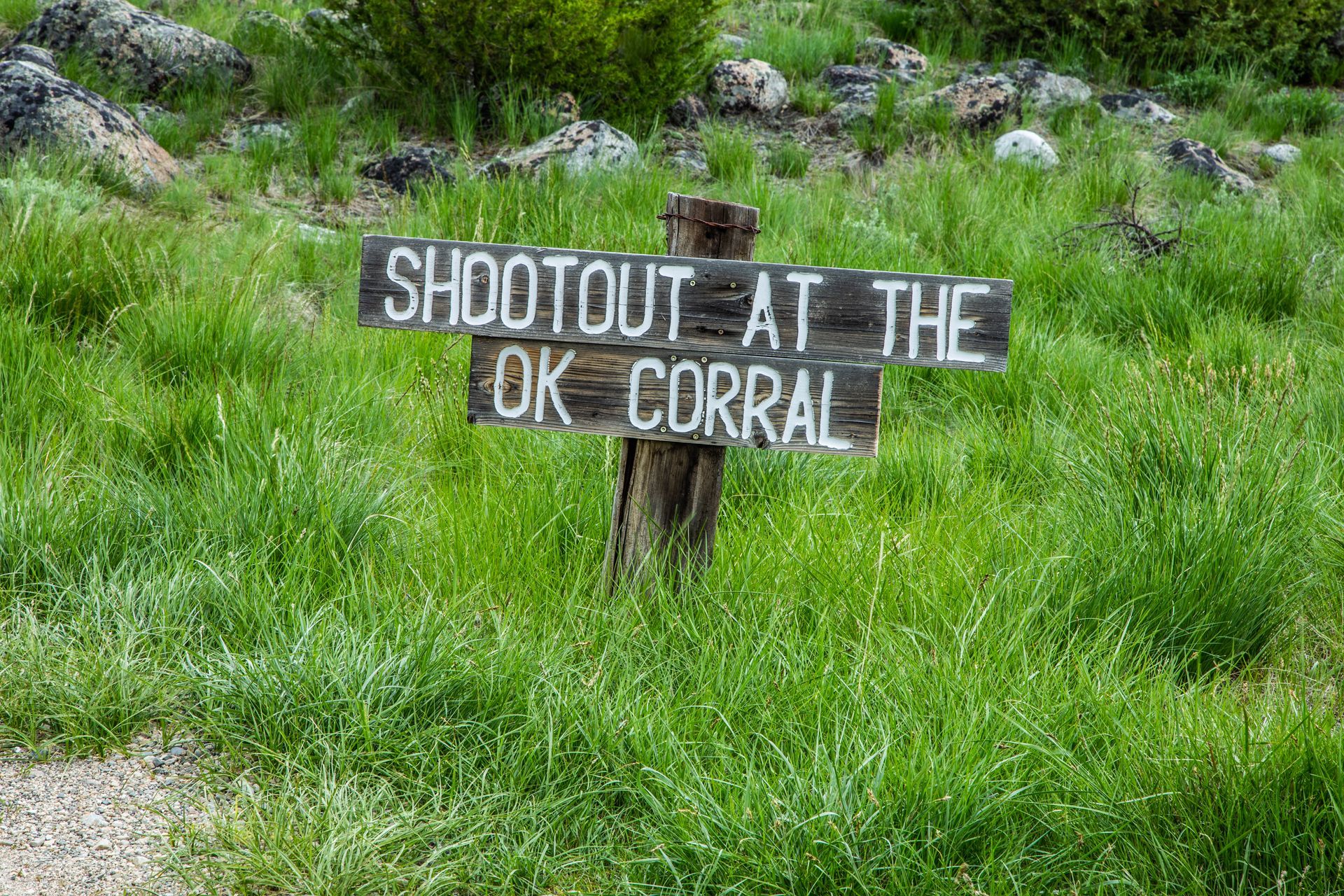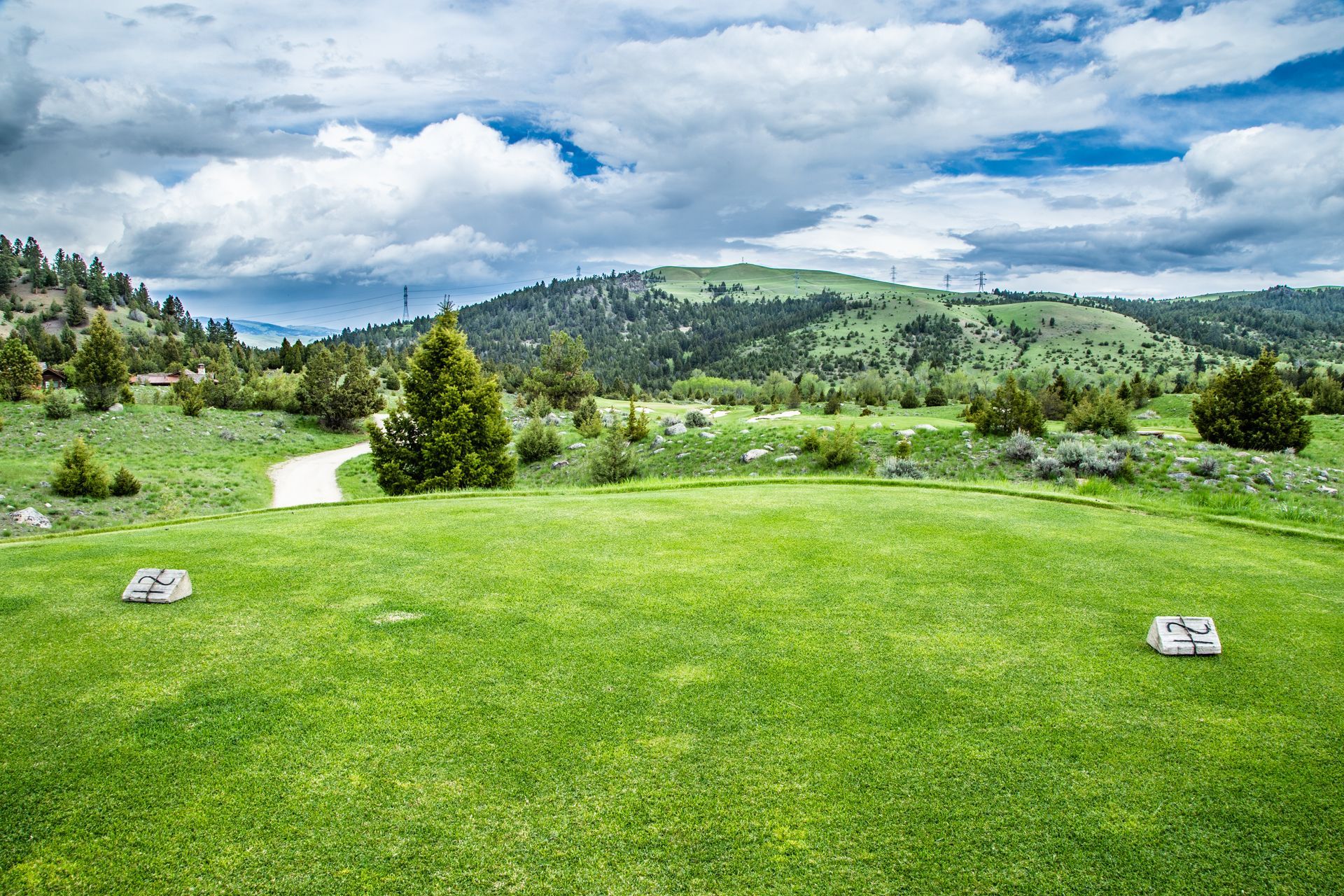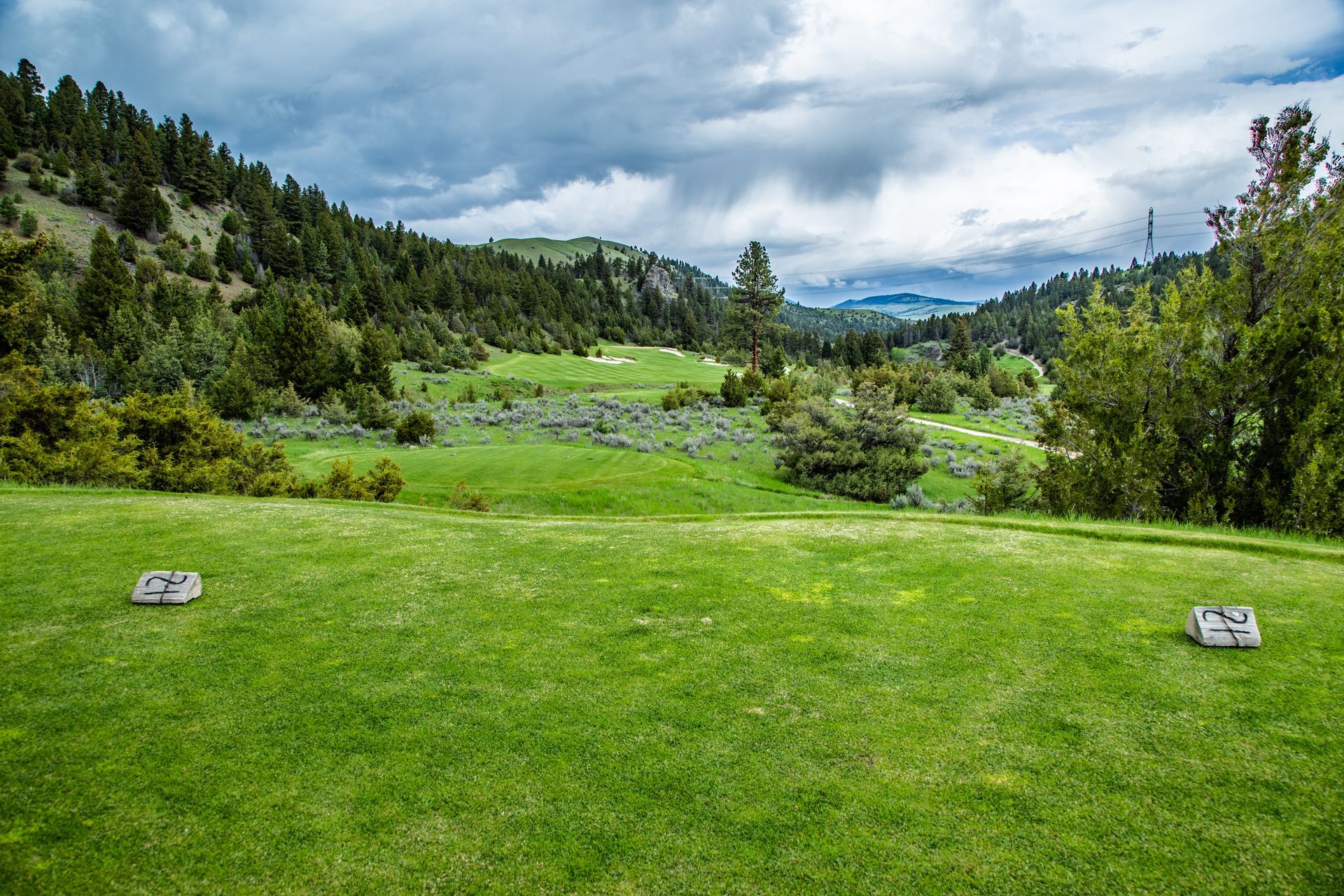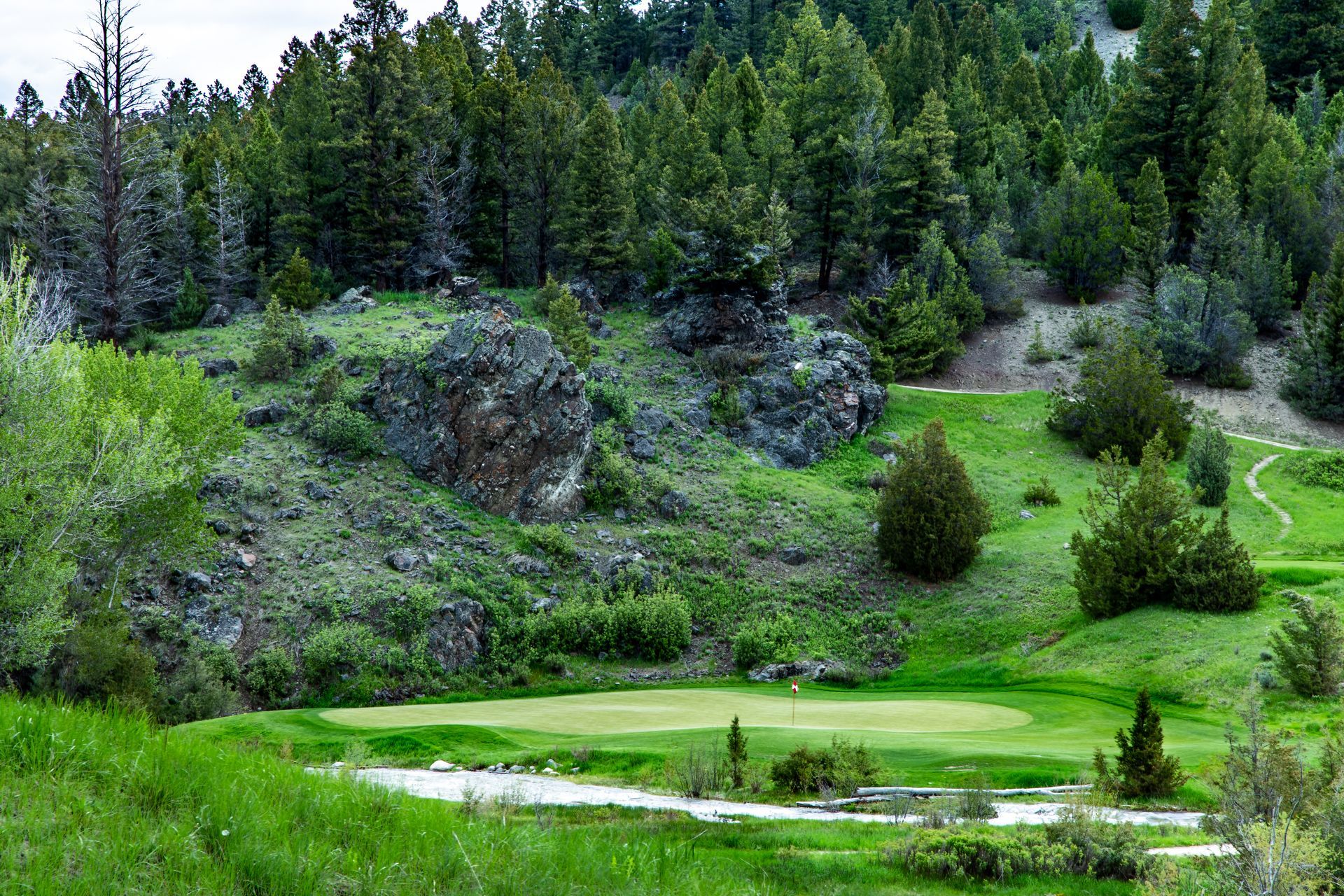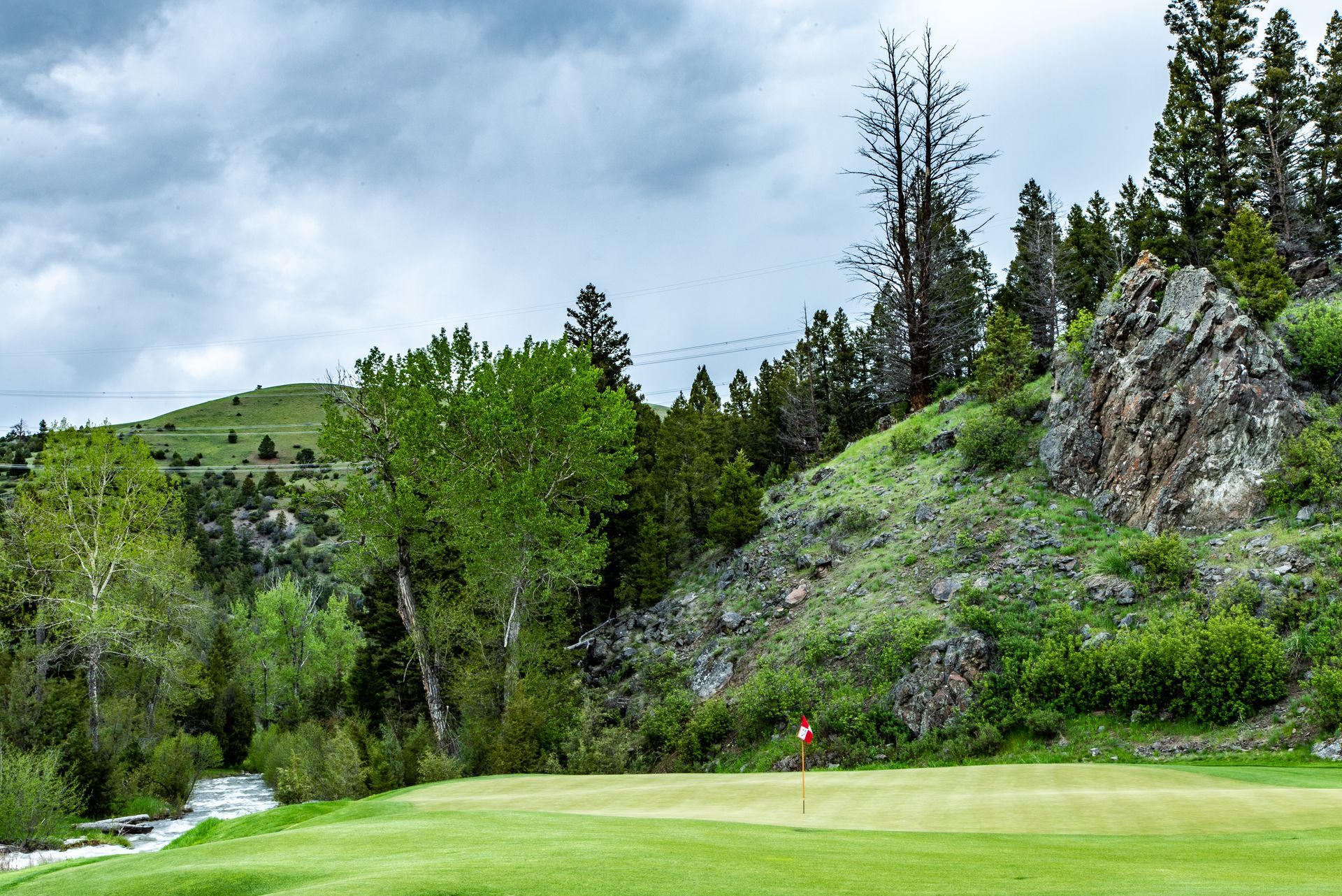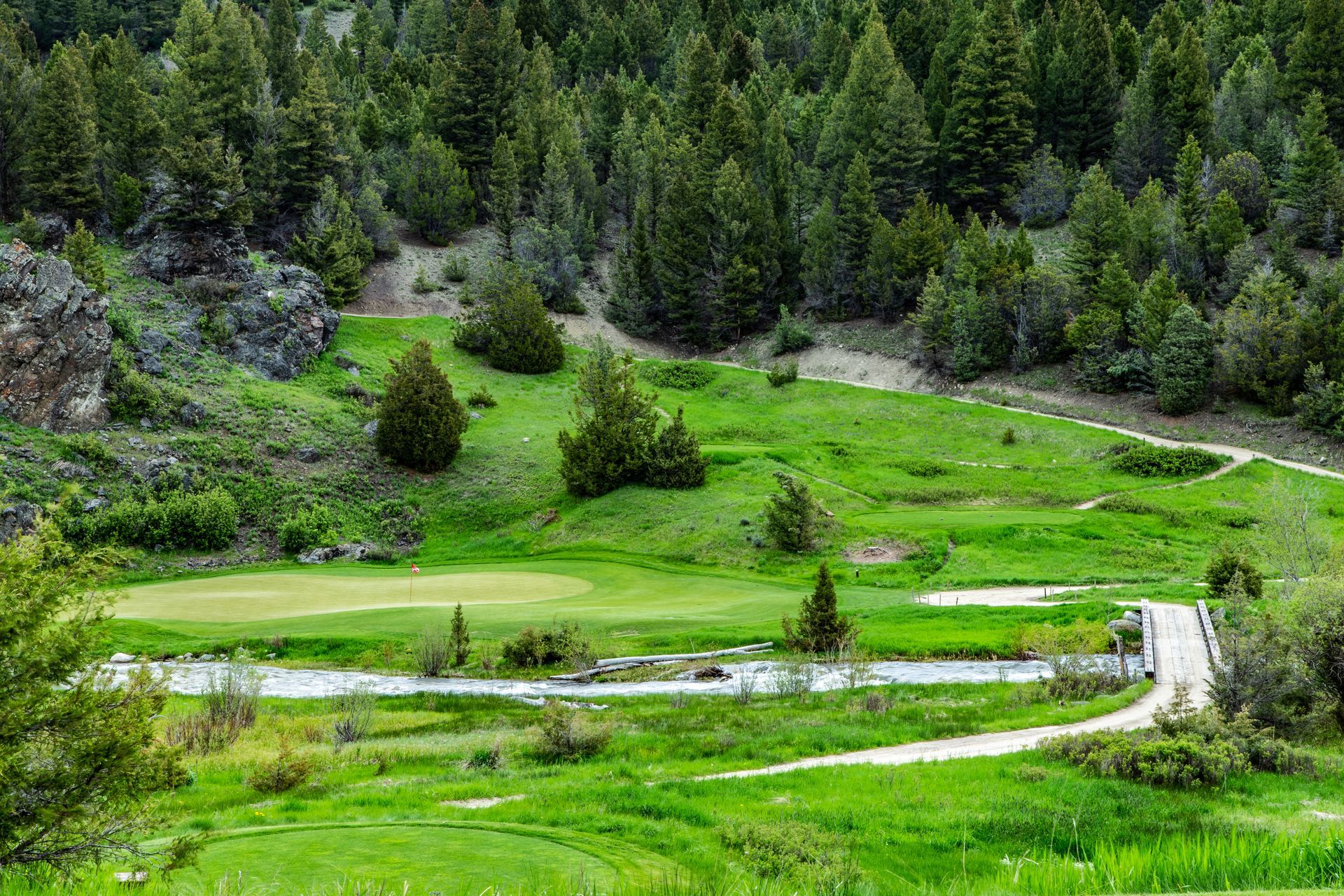A Round of Golf Like No Other
View photos of all 18 picture-perfect tee shots.
Hole #1: True Grit
Par 4 | 435 yds
As you cross Rock Creek to the first tee, you are immediately greeted by a hole that requires a decision off the tee. A bunker 260 yards away splits the fairway, requiring an early decision to hit left, right, lay up to, or carry. All are good options, if executed. The very long hitter will have to be careful, as carrying the bunker may be easy, but the fairway runs into Dry Gulch. The green sits diagonally away from you and the best angle to this undulating green is from the left side of the fairway.
Hole #2: It's a Big Country
Par 4 | 471 yds
As you exit the first green and walk over to the second tee, you are greeted by one of the more intimidating drives on the golf course that stares directly at the Flint Creek Mountain Range. The large bunker on the left side tempts you to shorten this slight dogleg, which certainly leaves the best approach. A drive down the right side is safely in the fairway but will leave the approach in a valley, requiring you a blind shot over the only greenside bunker. A two-tiered green awaits to challenge your flat stick. The front right hole location is nearly impossible to get close without a well-placed drive, while the back left punchbowl makes hole locations there slightly more accessible.
Hole #3: The Long Riders
Par 5 | 577 yds
After the difficult second, here is a chance to get a shot back. The third plays 580 yards but is certainly reachable considering the 4700 feet elevation. Large fairway bunkers on the right will need to be challenged by the longer hitter as the fairway slants to the left, also narrowing on the left side. The second shot will challenge a player laying up, as there is a set of bunkers bisecting the fairway from 100 to 150 yards away from the green.
Hole #4: Unforgiven
Par 4 | 457 yds
The fourth hole is a challenging uphill par four. Standing on the tee looking over a stunning mix of rocks and fescue, you will see a generous fairway framed by pine trees. One must hit a solid drive to get through a valley in the fairway that will engulf miss-hit drives and leave you with a long iron or even a wood on your second shot. This valley is a great example of the strategy required at Rock Creek. Many of the holes offer generous fairways, so the average golfer will not get beat up off the tee. However, if an expert player has any chance of scoring well, he must precisely place his drives not only with distance, but with accuracy. On the approach, be careful of the greenside bunker on the right. Once on the saddle green, you will certainly find getting here was only half the battle. Par is a great score on this great, but tough hole.
Hole #5: Hang 'Em High
Par 4 | 354 yds
Sure beauty. A player needs to choose which mountain to aim at of the tee. The safe route left leaves a semi-blind short iron into a severely undulating green. A long hitter will be tempted to take it over the right bunkers and chase a drive up near the green. The fifth hole provides a great opportunity for a birdie and certainly be needed between the difficult 4th and 6th holes.
Hole #6: Bad Man's Bluff
Par 4 | 443 yds
The sixth hole is another strong par four that normally plays into the prevailing wind. The fairway is larger, but an ominous fairway bunker on the right side shrinks the fairway in half, and is certainly not a spot to be in. The well placed bunker can be challenged, providing a clear shot to the green with a low to mid-iron. If a long hitter decides to try and clear the bunker, a much shorter approach is left, but it will be a blind shot. More decisions. The green is relatively flat and with the large false front on the green, it is a good thing.
Hole #7: Magnificent Seven
Par 4 | 486 yds
Few holes can be this good without a single bunker or hazard. A mostly buried rock in the middle of the fairway acts as an aiming tool for this hole that disappears from the golfer’s view off the tee. A solid drive will carry the native grasses and catch the downhill sloping fairway to setup the approach. A small hill initially creeps in from the left while another hill creeps in from the right as the fairway meanders its way back and forth to the putting surface. The green features a severe false front, shoving balls back towards a collection area. The rest of the severely undulated green is no walk in the park and is the hole’s main defense. The way Magnificent Seven unfolds shot by shot is one of the most impressive experiences had on a golf hole.
Hole #8: Rio Lobo
Par 3 | 193 yds
Finally, a par three, and it is certainly worth the wait. The eighth hole was a great hole even before it was formed. Rock Creek runs in front and to the right of the green. With six bunkers on the hole the creek is not the only danger off the tee. Not only is the eighth a great hole, but it is one of the best fishing areas along Rock Creek.
Hole #9: El Dorado
Par 4 | 403 yds
This short par four can play very long when the prevailing wind is up. Like many other holes, this large fairway plays a lot smaller than it looks. If you find the fairway with a well struck drive, you will have a mid to short iron into the sunken green leaving a chance at a birdie.
Hole #10: High Noon
Par 5 | 632 yds
Tom Doak considers the 10th hole one of the best two shot holes he has ever designed. There is plenty of length, playing over 600 yards, and is featured at the highest point on the course, going on a roller coaster ride as it works its way to the green. A well placed, low spinning drive can find the speed slot portion of the fairway, tumbling to distances beyond normal reach. The hole features two fairways that are separated by a collection of bunkers and marks the point that the hole starts traveling uphill and moving to the right. The second fairway is framed by a forest of trees on the right along with a string of bunkers. Approach shots can be worked off the bank located left of the green and acts as a safety zone when attacking this green. Countless options exist on this diverse hole that fits perfectly in Big Sky Country.
Hole #11: High Plains Drifter
Par 4 | 439 yds
The classic “bogey beware” hole is one that features plenty of length as well as trouble off the tee and at the green. Rock Creek’s 11th embraces these elements by featuring a challenging tee shot with a steep fall off to the left. The left fairway falls off and filters into the joining 10th fairway and creates a blind approach to the green. The right side of the hole offers a limited view of the fairway and requires a longer carry to clear the native grass before being faced with a potentially semi-blind approach shot. Even with a perfect tee shot, the golfer is faced with an approach shot to a challenging crowned green that repels more shots then it accepts. Not the longest par four on the course, but certainly the most challenging.
Hole #12: The Good...
Par 3 | 158 yds
The twelfth hole is a short, but dangerous par three. The tee shot is into the prevailing wind towards a narrow green surrounded by seven bunkers. The green has a lot of movement and a player making par should be satisfied and be ready to prepare for its Big Sister at the next.
Hole #13: The Bad...
Par 3 | 265 yds
A larger horizon green with the prevailing wind at your back make this par three just slightly easier. The best play is to aim your tee shot at the right bunker with a little draw. Short and right still allows a chance for three. Long and left will not be so fortunate.
Hole #14: The Ugly...
Par 5 | 548 yds
Severely downhill, a solid drive will leave one with a mid to short iron to a large green. The fairway is a large target, but in order to maximize distance and the best angle of approach, a player must hit a small bottle neck in the fairway. The green slopes more left to right and front to back than one would initially see.
Hole #15: Shootout at the OK Corral
Par 4 | 352 yds
Doak is famous for designing ½ par holes, and the short 15th hole fits into that category. The hole measures 352 yards from the tips but plays downhill at high elevation which works together to make it possible to reach the green with a big tee shot. A collection of bunkers are featured in front of the green, but two clear paths of short grass lead up to the putting surface as well. A penetrating drive up the left side will utilize the fairway contours to generate some extra roll and feed towards the green. The other option to reach the green is a straight line at the right half of the green that splits the bunkers, potentially setting up an eagle putt.
Hole #16: The Hanging Tree
Par 4 | 486 yds
Rock Creek’s 16th hole features an iconic tree on the right side of the fairway while a bunker on the left side of the fairway acts as your target. The fairway slopes from left to right so tee shots hit towards the bunker will filter back to the middle of the short grass. Staying to the left continues to be the theme for the hole as shots hit that direction will avoid the bunkers and kick towards the undulated putting surface. With the large pine trees, mountain backdrop, and excellent architecture, the 16th hole at Rock Creek Cattle Company embraces everything the course is all about.
Hole #17: Rio Bravo
Par 3 | 191 yds
Like the 8th, the 17th hole is an impressive par three that plays over Rock Creek. The background features a tree covered mountain backdrop and the creek comes into play much closer to the putting surface than Tom Doak generally employs with a water hazard on a par three. A small bailout area exists to the right of the green that angles slightly away from the golfer as it follows the meandering creek. There is no ground game that can be played on this hole, requiring an accurate shot into the beautiful background.

